I love animals—unique animals, weird animals, and even the strangest animals on earth. There are simply so many outrageous animals in the world that it’s hard for me to choose a favorite animal.
Do you love unusual animals as much as I do? Then you’re about to have an epic journey through the strange side of the animal kingdom.
Weird Animals
The first time I thought an animal could be weird was at the zoo when a kid exclaimed, “That’s a weird animal,” as they looked at an Aye Aye at the primate exhibit. The kid wasn’t wrong.
Here are some more weird animals to feast your mind on.
Ghost Shark

Ghost sharks or chimeras are not actually related to the great white shark or any other shark, but they are one of the oldest in the world, with DNA testing indicating that the animal evolved before flowering plants did!
The ghost shark was swimming in the oceans when dinosaurs roamed the earth. Chimaera can grow to be an impressive 30 years old, and they are also known as elephant fish or ratfish.
Pacu
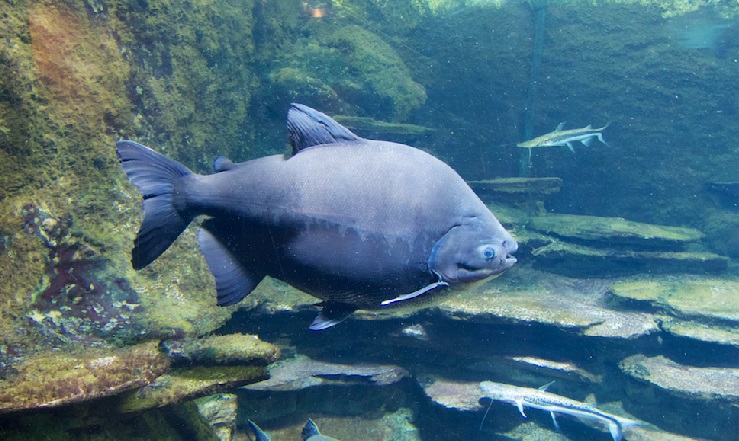
Related to the fierce piranha fish, the pacu is a vegetarian version, which looks just like its more carnivorous relative. The pacu breeds are often sold at aquariums as vegetarian piranha to fish owners. However, when you open their mouth, you’re in for a fright as this fish has teeth like a human!
Sea Pig
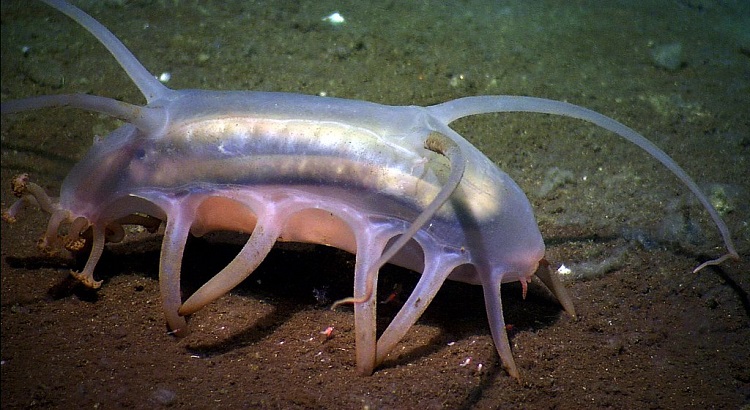
The sea pig isn’t a pig at all—it’s a cucumber. Can you imagine these bottom cleaners or carrion eaters feasting on a whale carcass? They do, and they will eat almost anything, shoveling it into their mouths with their tentacles.
Pink Fairy Armadillo
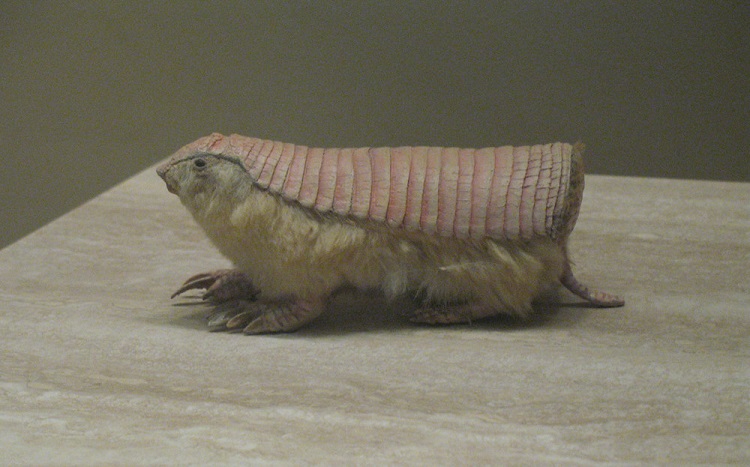
The pink fairy armadillo is perhaps one of the cutest animals I have ever seen. It looks like something right out of a fairytale with its fluffy edging and hardened shell to protect its back. Weighing only 120 grams, the pink fairy armadillo is also as small as a fairy would be.
While the numbers of pink fairy armadillos are dwindling, it’s incredibly difficult to create a breeding program as most of these pretty animals die within days of being moved to captivity.
Red-Lipped Batfish
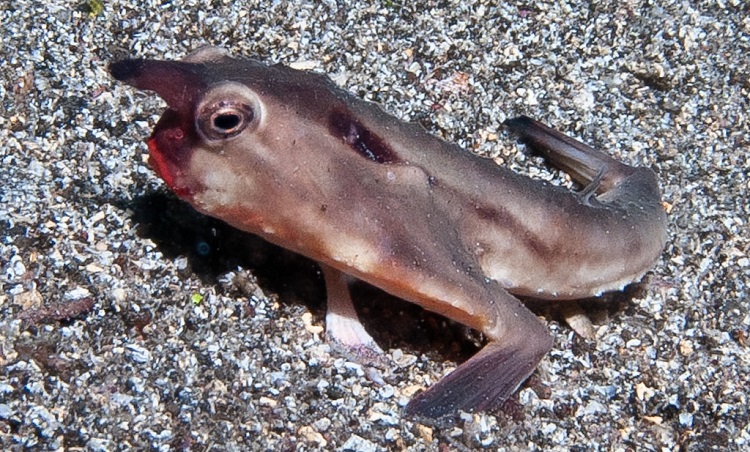
Like a little girl wearing mommy’s lipstick, the red-lipped batfish has rouged lips that are quite striking and somewhat out of place. The red-lipped batfish is actually a poor swimmer, and it uses its two ventral fins to walk along the ocean bottom, looking for smaller fish to eat.
Pacific Barreleye Fish
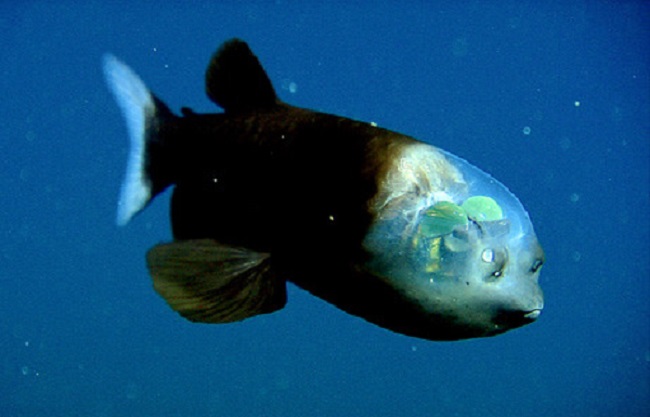
Talk about seeing what someone’s thinking—the Pacific barreleye fish is truly transparent when it comes to its thoughts. Quite literally, their skull is transparent, showing off their brains, nerves, eyes, and more. The glowing green eyes add a super creepy element too.
Axolotl
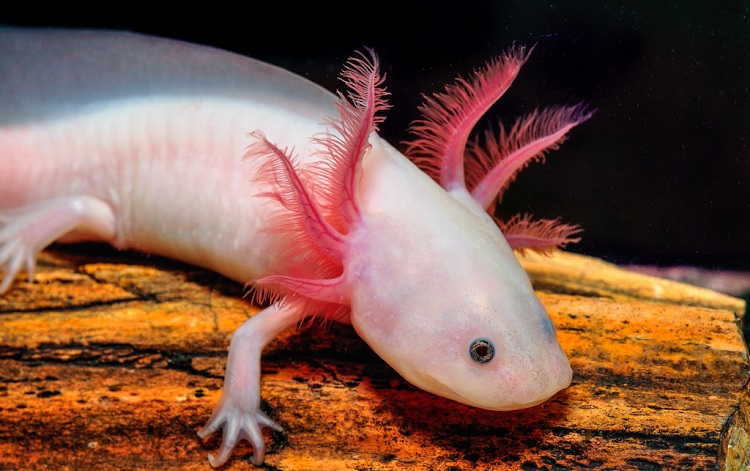
The Mexican walking fish or Axolotl is a definitely weird addition to the animal world. This is not a fish but an amphibian, and I simply love the bright-colored red crown around its head, which are its gills, allowing it to breathe underwater.
Dugong

Ever gone swimming, only to run into a cow down in the depths of the deep blue? Chances are you’re not hallucinating—it’s a dugong, or sea cow, that you’re seeing. A dugong has cow-like features but the body of a dolphin. With their front legs, they graze the underwater pastures on the seafloor, just like their land-based namesake.
Dumbo Octopus
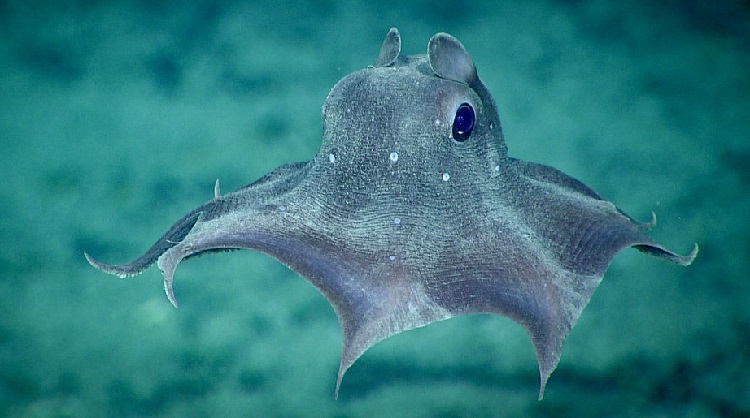
Hitting the cuteness scale is the dumbo octopus with its large protrusions that resemble elephant ears. I really love the name because the dumbo octopus actually looks like the Disney cartoon character Dumbo the elephant, even sporting frilly skirt-like arms.
Sadly, you’re not very likely to see a dumbo octopus in the flesh since these ocean creatures live at depths of around 13,000 feet in a complete absence of light.
Goblin Shark
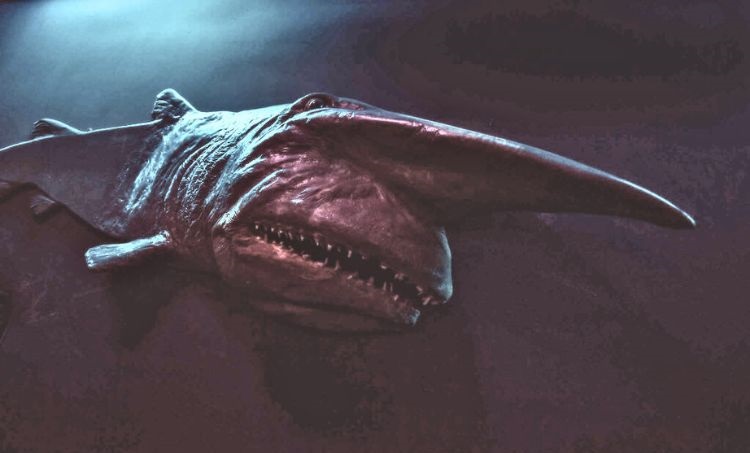
Staying with deep sea fish, the goblin shark is a true mystery of the deep. This shark lives at depths of over a thousand feet, and they are found all across the world’s oceans. Goblin sharks are prehistoric in nature, making them living fossils.
Due to their translucent skin, goblin sharks appear pink in color, which just looks so out of place with their flattened lower jaw and projectile-shaped nose.
Markhor
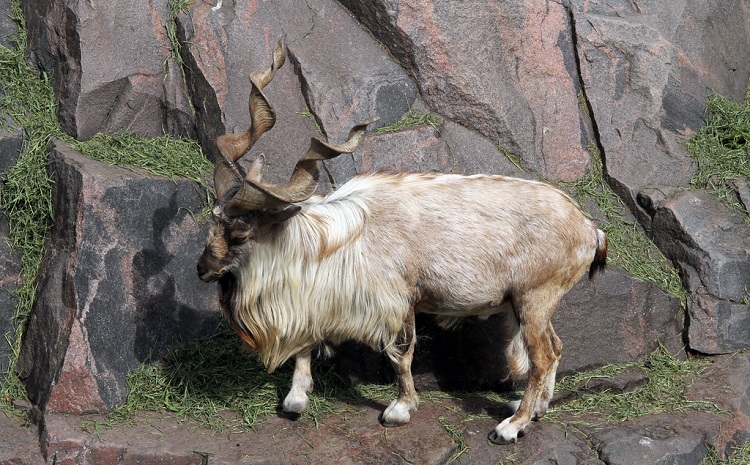
I adore goats, and the markhor is one of my favorite wild goats. Found in the mountains of Turkey and Afghanistan, the markhor has the most unusual set of horns that spiral like a corkscrew. Markhor horns can grow to a length of over 1.5 meters.
Magnificent Frigatebird
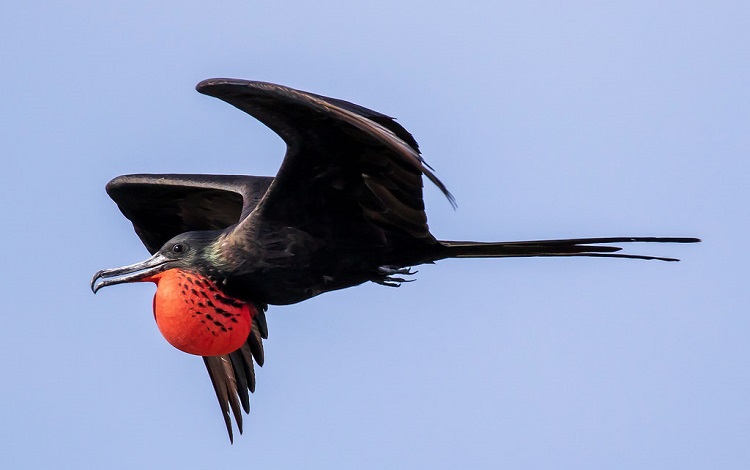
The magnificent frigatebird is a sea bird, and its rather dull plumage of brown and white feathers may not appeal to you but wait till the male is looking for a female. This is when the male inflates their large red gular sac, making a giant red drum appear on their chest.
Irrawaddy Dolphin

Another amazing aquatic mammal is the Irrawaddy dolphin, and I simply love their snubby heads that are rounded, resembling a baby alien from the movie Aliens.
These dolphins have to surface to breathe as they don’t have gills. They live in areas of Southern Asia where the ocean meets the rivers and salty sea and freshwater rivers mix.
Bizarre Animals
Star Nosed Mole
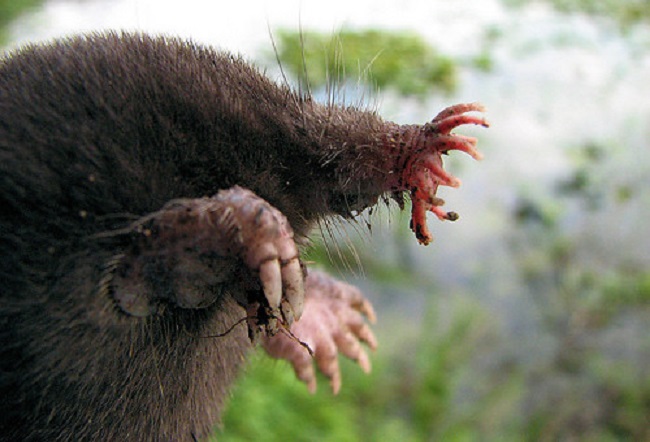
This animal is the stuff of nightmares, and I simply feel creeped out when I see the star-nosed mole. The animal has a couple of appendages on its face called rays that it hunts with and feels its way through the underground tunnels.
Echidnas
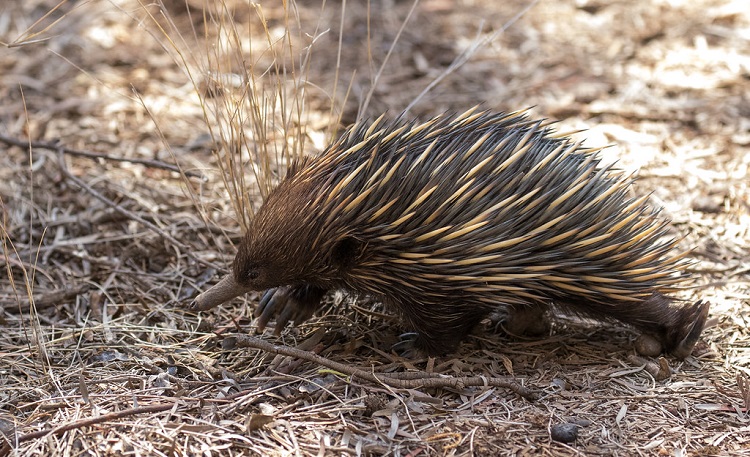
The spiny anteaters or echidnas are very remarkable, and I simply love the spikey hair they seem to have on their bodies. Even more interesting is the fact that echidnas lay eggs but raise their offspring like mammals.
Native to Australia and New Guinea, the echidna has broad feet with long claws, which dig up ants, worms, and other insects to eat.
Penis Snake
Yes, I had to read it twice when I first came across a reference to this animal, and the pictures explain why it’s got this vulgar-seeming name.
With a head that definitely resembles a human phallus, the penis snake is actually not a snake, as it’s an amphibian with rings like an earthworm. It’s unclear as to what a penis snake eats, and the animal is nearly blind.
Tarsier
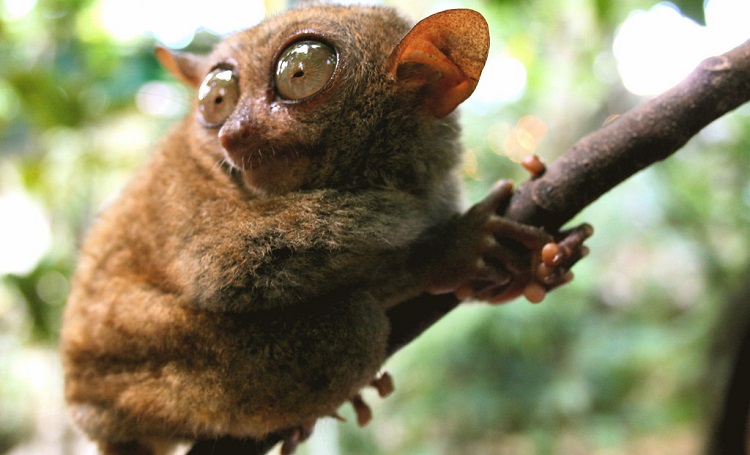
The tarsier is a tiny primate with large eyes and very keen hearing from its bat-like ears. Extraordinarily, the tarsier is a venomous primate, and it can secrete a poisonous substance from its arm gland, creating a toxic reaction that may trigger an allergic reaction or cause death.
Mantis Shrimp
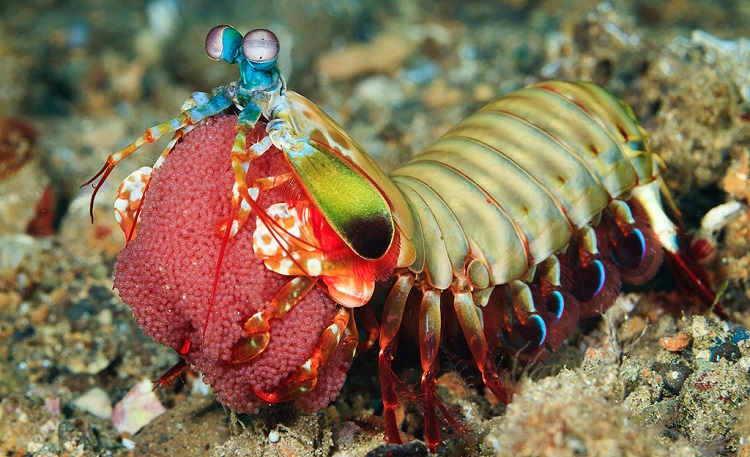
Don’t let the bright and colorful appearance of a mantis shrimp fool you. These aggressive crustaceans are known to club at their prey and predators alike, producing enough force to hit you like a bullet.
The mantis shrimp hunts and kills fish with its sharp claws that can pierce scales and flesh, creating a nice skewer for dinner.
Blobfish

Imagine a fish that looks more like a failed oyster than a fish. This unusual fish has even earned the title of “ugliest fish in the world.” And to complete the picture of ugliness, the blobfish has a giant fleshy nose that hangs over the rim of the mouth. Thank goodness people don’t look like them!
Naked Mole Rat
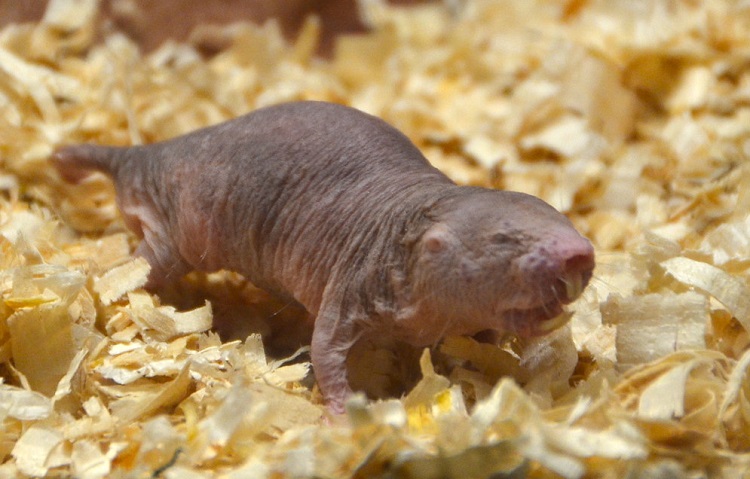
Named for creatures that aren’t actually part of its genetic pool, the naked mole rat is neither rat nor mole. This unusual animal is also called a sand puppy, and it looks like one of the sandworms of Dune, except for the sharp walrus-like teeth.
Naked mole rats are entirely hairless, and they have no insulation under their skin, making it essential they live in subterranean environments.
Bald Uakari
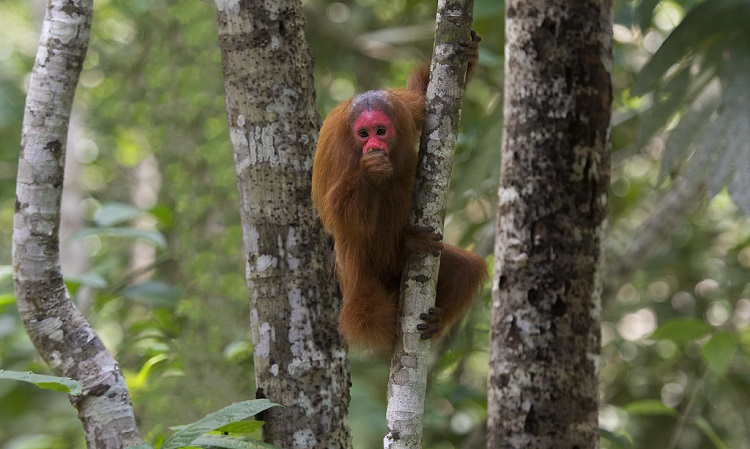
When I saw a bald Uakari for the first time, I thought I was seeing Hellboy! This primate has no hair on its face, which is a bright cherry red color, with large cranial lobes, exactly like the comic character.
Platypus

Another animal that looks like it was assembled by Dr. Frankenstein is the platypus, which has a bill mouth, otter feet, and a tail like a beaver. I simply adore their unique appearance, and they are one of the few egg-laying mammals on earth.
The platypus lays eggs, which it hatches, and then cares for the young as any other mammal would. Classifying the platypus is quite tricky.
Giant Clam
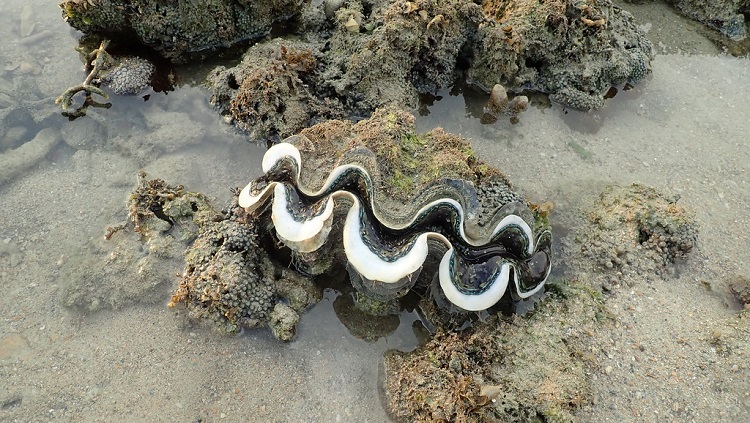
The giant clam is a living mollusk, and it is the largest clam in the world, reaching a length of 120 centimeters and weighing over 200 kilograms. The clam opens when it is feeding on single-cell plankton, but light-sensitive sensors instantly make it clam shut when danger approaches.
Strange Animals
Bird-Dropping Spider
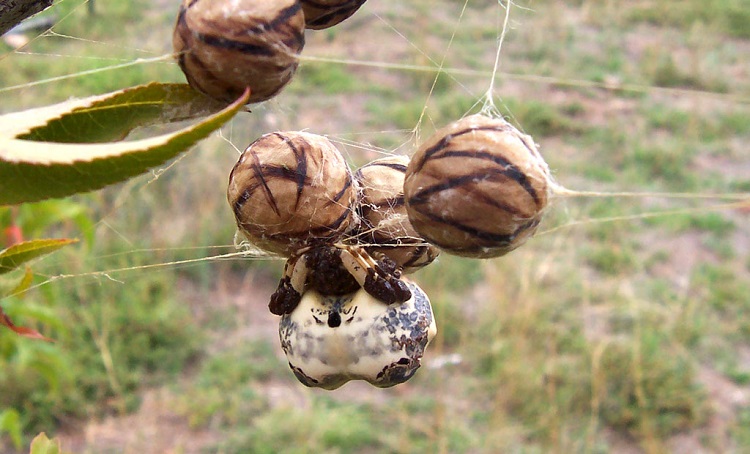
If you think you’re having a poopy kind of day, think of the bird-dropping spider that’s been genetically evolved to look like bird droppings so animals will overlook it as prey.
Thistledown Velvet Ant
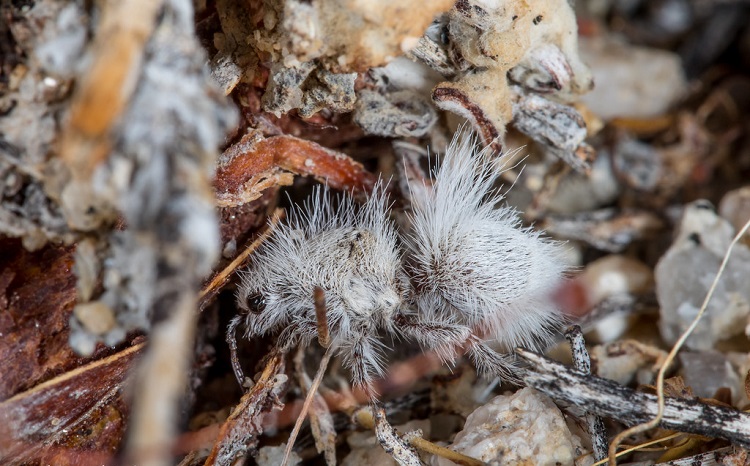
While this insect is called an ant, it’s more wasp-like in appearance and can certainly pack a powerful and painful sting. These wasps are parasitic in nature, and the females are wingless, which is why they resemble white furry creosote seeds as a form of camouflage.
Japanese Spider Crab
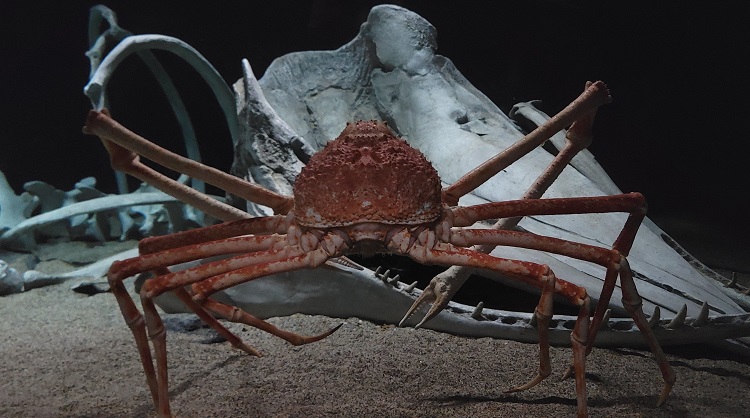
Seeing a Japanese spider crab for the first time is frightening. The long legs of the spider crab make it the biggest crab in the ocean, and it’s found in the Pacific waters off the Japanese coast.
Each leg can reach 12.5 feet in length, and if this crab was hostile, it would easily have carried off a human for dinner. You’ll find them at depths of 160-2,000 feet in sandy pits.
Bobbit Worm

Seeing the Bobbit worm burrowed into the ocean floor, you would be forgiven for considering it part of the coral reefs. Yet, the Bobbit worm is a living worm, and it is somewhat of a mystery. Scientists know next to nothing about the Bobbit worm, making it quite the enigma.
Dementor Wasp
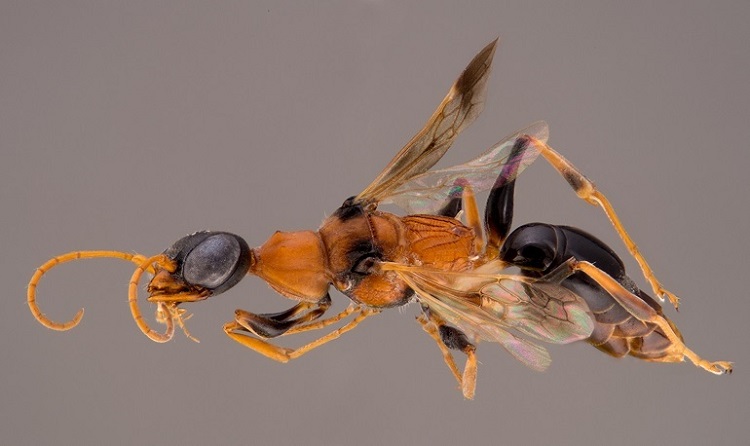
Thailand has some strange and unusual animals, and one of my favorites is the dementor wasp. Unlike other wasps, the dementor injects a toxin into a cockroach’s head, turning the roach into a zombie (#CoolButEw). The zombie roach even runs into the wasp’s nest—as if drawn by a siren’s call.
Honduran White Bat
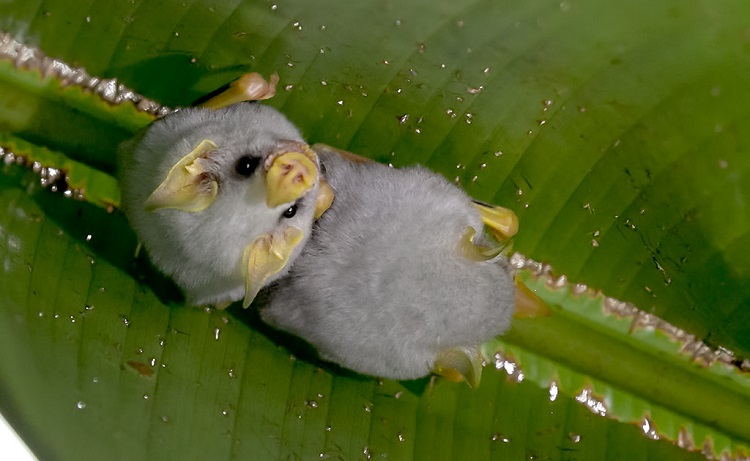
Talk about strange animals! The Honduran white bat very much looks like it was put together from spare parts as it has a white furry body, wings with a black membrane, and yellow ears and nose. These bats feed off fruit, specifically a single species of fig, which makes their survival a mystery.
Liger
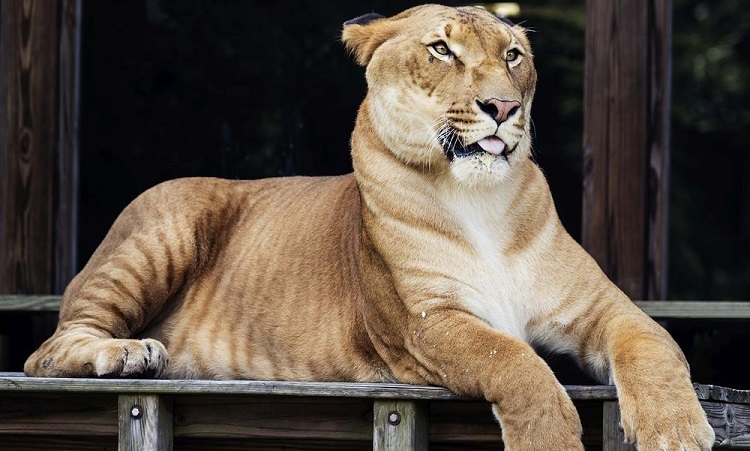
Not all animals are entirely natural, and while humans may want to one day create their entirely original animal (#PlayingGod), they have succeeded in crossbreeding animals such as lions and tigers, which produce a liger.
These larger-than-normal cats originate from the pairing of a male lion and a female tiger, creating a hybrid that’s much bigger than its parents, resembling a lion with tiger stripes.
Manatee
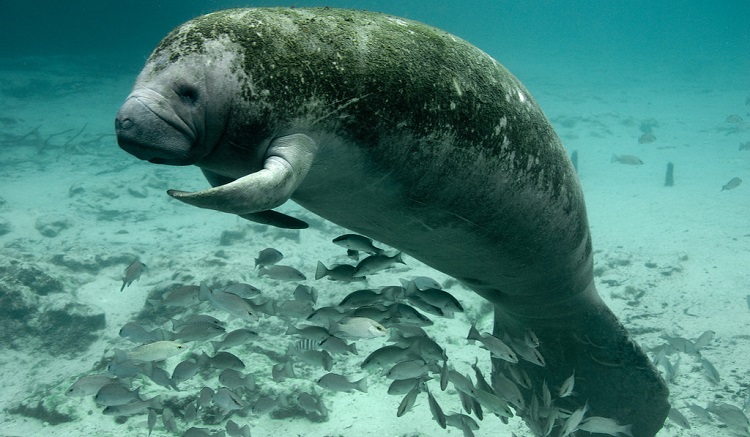
Manatees are also called sea cows, but they are somewhat different from the dugong. The large-sized manatee peacefully grazes on grasses and aquatic plants in the tropical oceans, consuming almost 10% of their enormous nearly two tons of weight each day.
Interestingly, manatees are known to fart as a way to float in the water, and these silent animals are actually related to elephants.
Pangolin
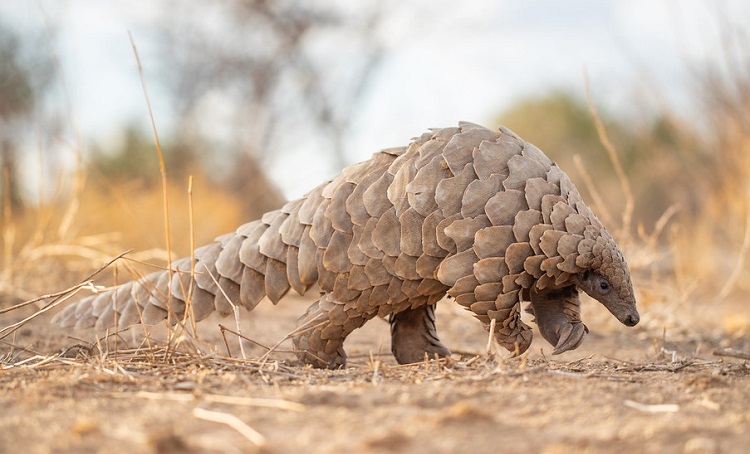
Also called scaly anteaters, the pangolin looks like it’s heading to war with the scales that cover its body. Pangolins are the most sold animal in international wildlife markets, and the meat and scales are prized for various uses, which has led to this unique animal almost reaching extinction.
Despite their scaled appearance, the pangolin is an insectivore, and they are peaceful, often curling into a pinecone shape to avoid predators.
Tapir
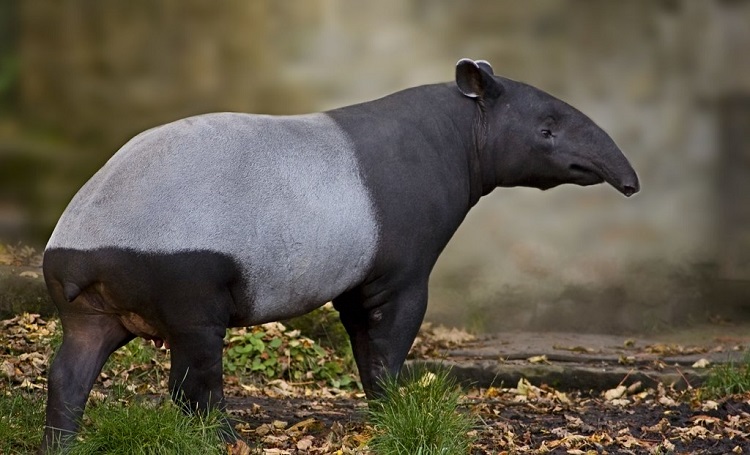
With the shape of an anteater, the tapir is a rather curious animal, except that it has a body covered in black and gray fur. The closest relative to the tapir is the horse, despite it resembling a hippo in its body shape. The short trunk-like nose is both an extra hand and a snorkel in rivers.
Nudibranch
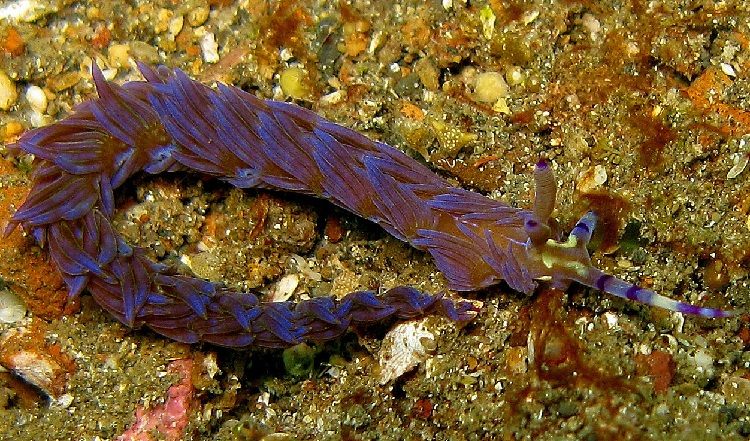
Nudibranch animals are sea slugs that have shed their shells as a stage of development, producing brightly colored bodies and unique patterns.
Vietnamese Long Nosed Snake

The Vietnamese long-nosed snake is endemic to Vietnam, and due to its ratlike nose, it acquired the name, though it’s often called a rat snake. The long protrusion on the snake’s nose reminds me of a rhino horn, despite it being green and covered in scales like the rest of the snake’s body.
Funny Looking Animals
Sarcastic Fringehead
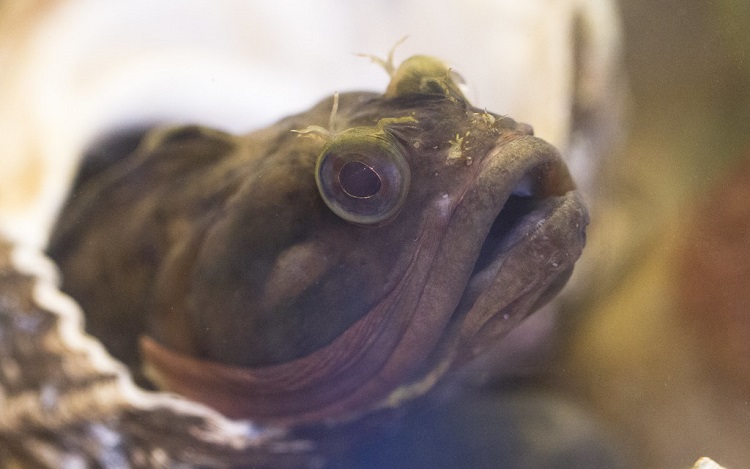
The sarcastic fringehead (aka tantrum fish) is a marvelously strange fish. It’s brightly colored and, despite its size, can open its mouth to an impressive size. The fish is very territorial, protecting its home from anything that moves.
Aye-Aye
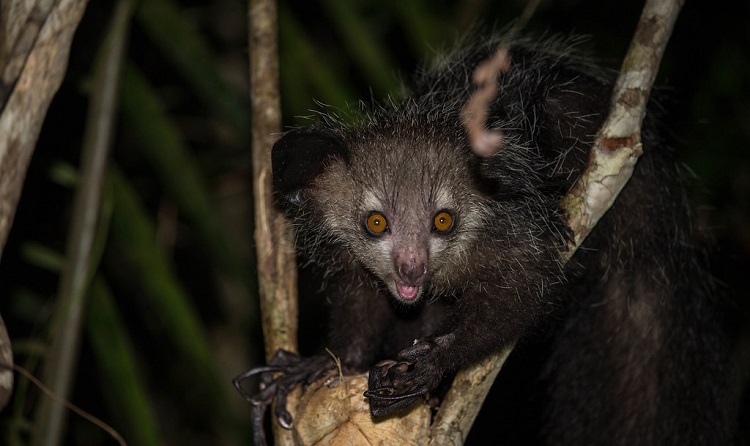
While an Aye-Aye would make a fabulous bowling partner with their elongated middle finger, this tiny primate is more interested in digging for beetles and worms in tree trunks. Much like a rabbit, the Aye-Aye has needle-like teeth that grow continuously.
Bat Eared Fox
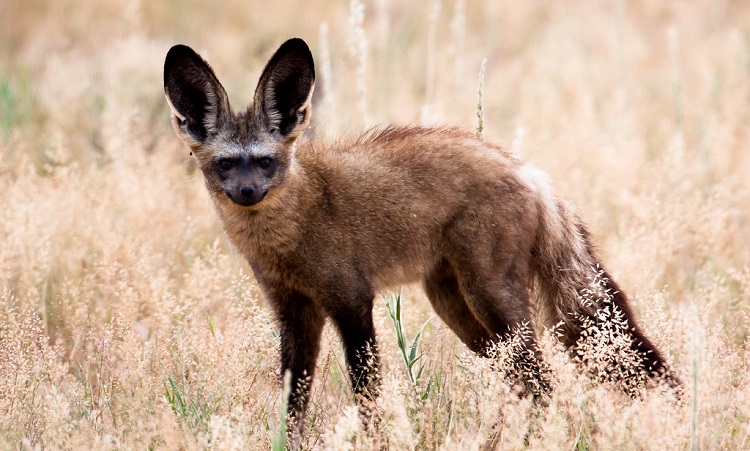
The bat-eared fox may be a fox, but it also has huge ears that resemble those of a bat, making for a strange animal that is not a carnivore like its other species members, as this canid eats insects. In some respects, the bat-eared fox is a lot like the opossum in the US.
Colugo
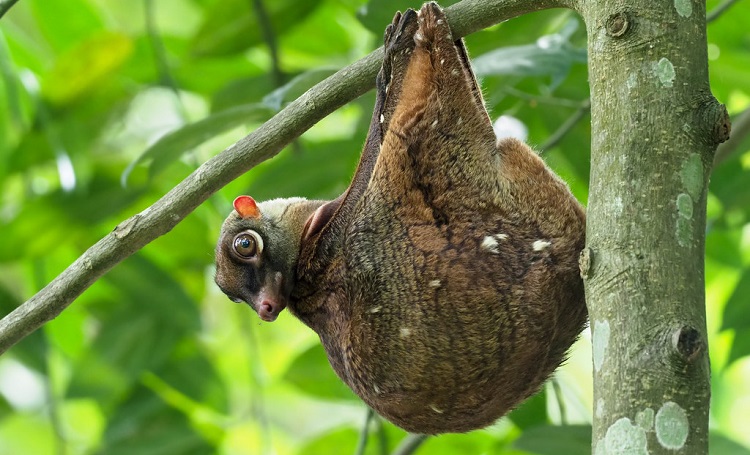
Like a superhero gliding from tree branch to tree branch, the colugo is a type of arboreal mammal related to primates, though it’s not an ape. Their gliding membrane or patagium connects the head, arms, sides, and legs for a larger surface area to glide on.
Fried Egg Jellyfish
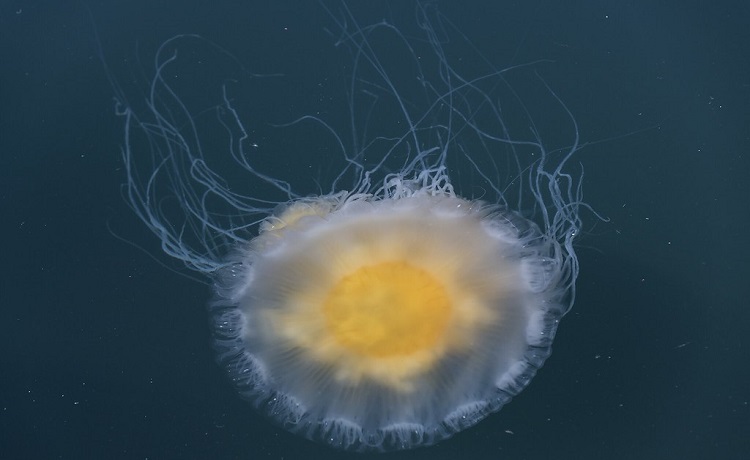
Want to have your breakfast float past you while you swim in the Mediterranean? Take note, this is a jellyfish out for their morning meal, and if you get too close, it may sting to defend itself from potential predators.
The body of the fried egg jellyfish is shaped like a yellow dome, just like a fried egg, with clear cilia surrounding it to make the tentacles, which resemble the white of an egg.
Lesula
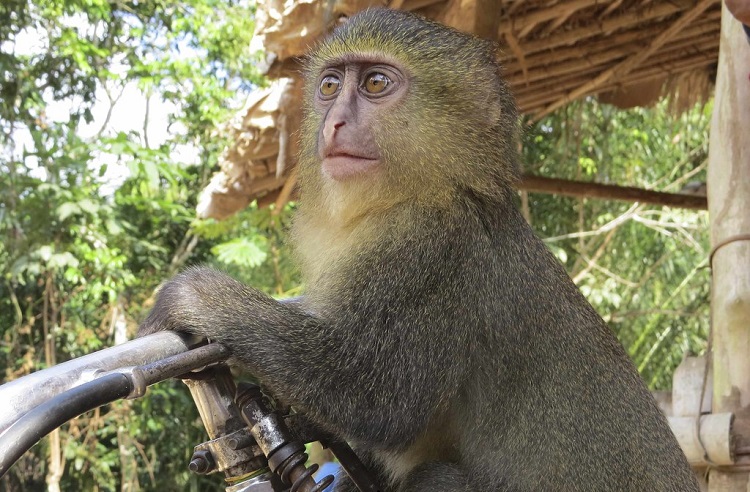
While we may believe we share some common heritage with primates, it’s really brought home when you see a lesula with its human face. Found in central Congo, the lesula may even remind you of Jake Gyllenhaal with its large human-like eyes.
Not much is known about the lesula, except that these primates are peaceful and inhabit the arboreal regions of the Congo and peacefully graze on fruit and leaves under the trees.
Great Potoo
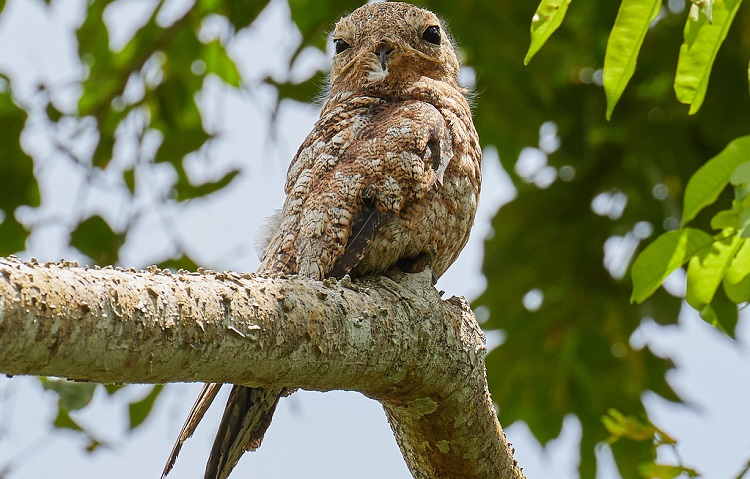
Fresh from the meme shelf, the potoo is famous without people actually realizing it’s a real bird. The goofy pop-out eyes seem too strange to be real. Found throughout South America, the potoo is a nocturnal bird that feeds on all sorts of insects.
When they close their large yellow eyes, they blend seamlessly with dead tree branches, which is their only defense mechanism.
Quokka
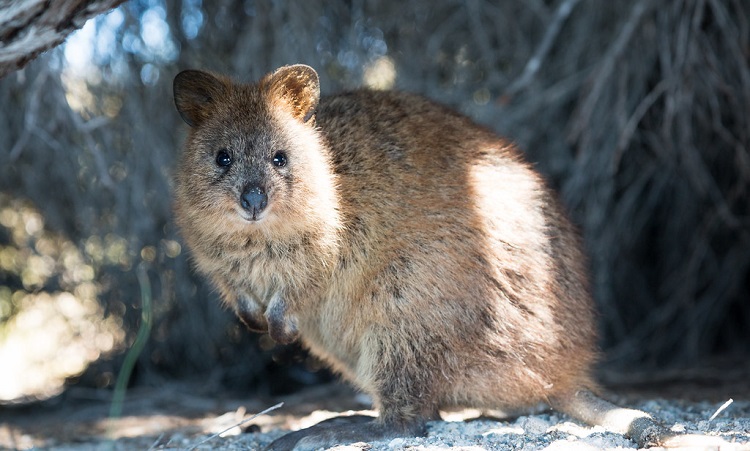
Known as the happiest animal on earth, the quokka has gained popularity and fame on the internet through memes and because they are now becoming popular pets too. The quokka is actually a type of small wallaby, and they are native to Australia.
The tiny quokka is related to kangaroos, and this particular animal is so popular due to the shape of its face, which makes it seem like it’s always laughing.
Tawny Frogmouth
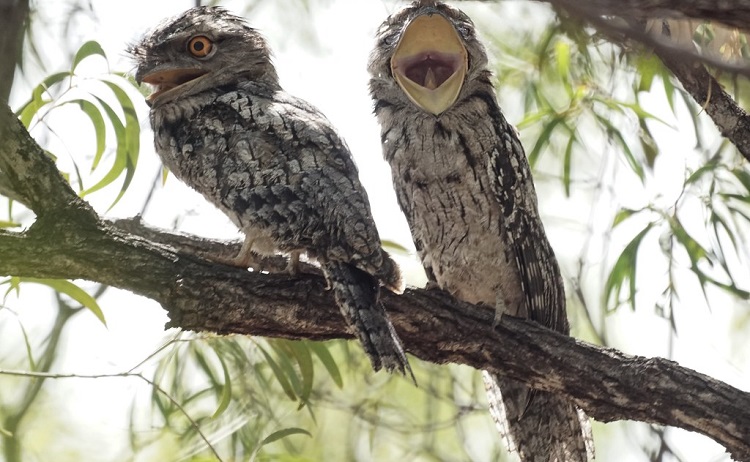
While it looks like an owl, the tawny frogmouth is a unique bird species that has a large mouth resembling a frog’s open mouth. Interestingly, the tawny frogmouth is nocturnal.
Kinkajou

The kinkajou is a type of primate that is able to rotate its feet backward, allowing it to run forward or backward along branches, and its tail acts as an extra limb, clinging to branches and aiding its movement through the tree canopy.
Unusual Animals
Fossa
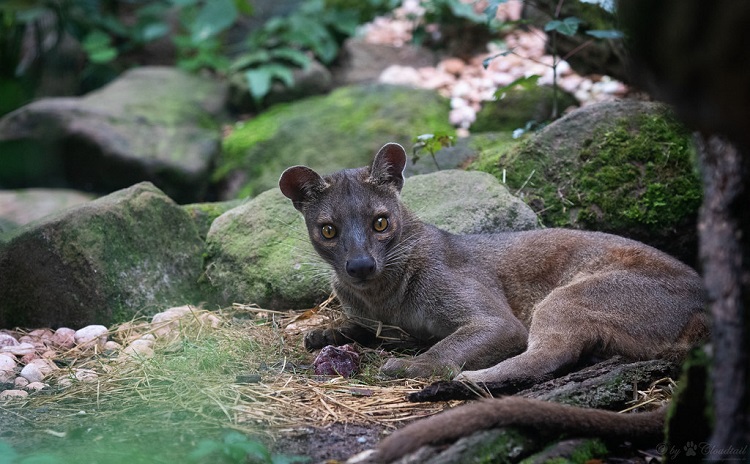
The fossa is perhaps one of the cutest cat relatives in the wild. This unique Madagascan animal has the body of a wild cat but the head of a mongoose. Fossas hunt in tropical forests, and they are very shy animals that avoid human contact, so seeing one is very rare.
Flying Fox
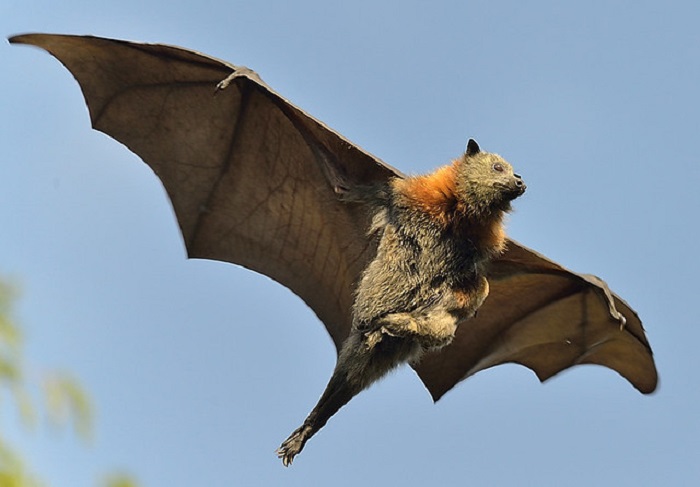
I adore bats and foxes, so having an animal that’s both bat and fox hits the jackpot for me. The flying fox is actually a giant size bat that resembles a fox with a unique canine-looking head. Their wingspan reaches a massive 1.5 meters across—wow!
Amazingly, these megabats can live for as many as 31 years. Despite their size and ferocious teeth, the flying fox is a herbivore, eating mostly flowers and fruit.
Flying Snake
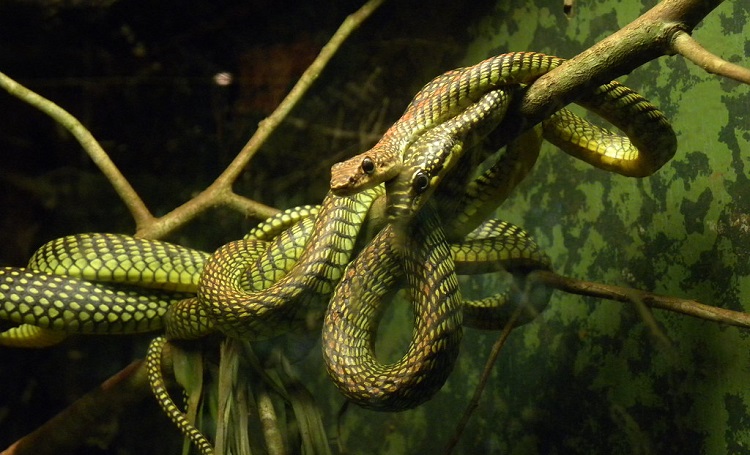
Never mind Snakes on a Plane; what about a flying snake? The Chrysopelea, or flying snake, is an arboreal snake that’s capable of gliding up to 100 meters from one tree to the next thanks to the ability to flatten its body and “sail” through the air by moving its body side to side.
Thankfully, your Asian holiday need not be spoiled as these snakes rarely leave the tree canopy, so you won’t risk stepping on one.
Hammer Headed Bat
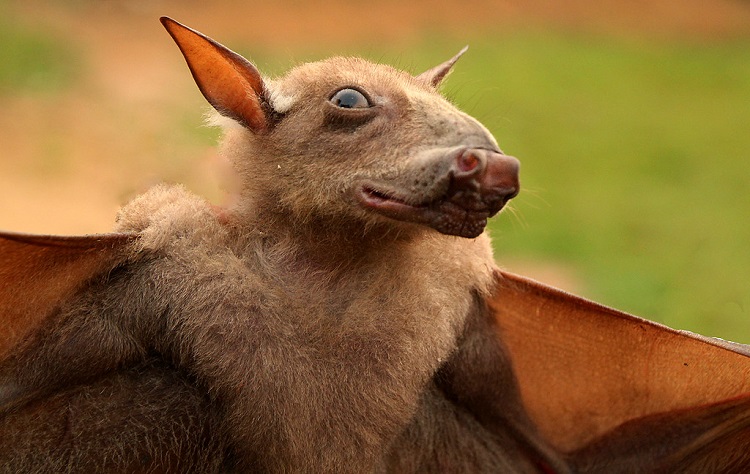
While the flying fox bat has a fox-like appearance, the hammer-headed bat vaguely resembles a dog with a large box-shaped head and large lips.
Unlike other bats that are mostly silent, the hammer-headed bat makes a loud honking sound, which often leads to people considering them as pests and killing them. Their wings span a meter across, and they can live up to 30 years. This third-largest bat in the world can fly as fast as 60 miles per hour.
Helmeted Hornbill
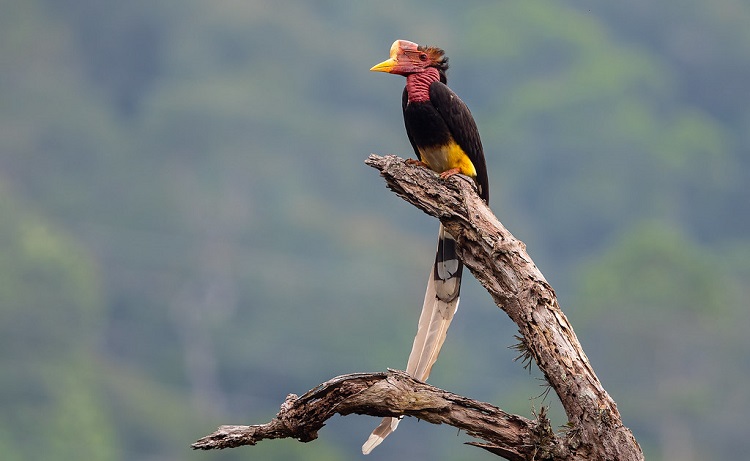
At first sight, the helmeted hornbill looks like it flew into a door, resulting in the large bulbous nose. The bony growth on their beaks resembles a helmet, and it can weigh as much as 10% of the bird’s body weight, which is offset by their long tails that can reach over a meter in length.
Helmeted hornbills are a highly endangered species, and it’s rare to see them in the wilds of Asia.
Jabiru
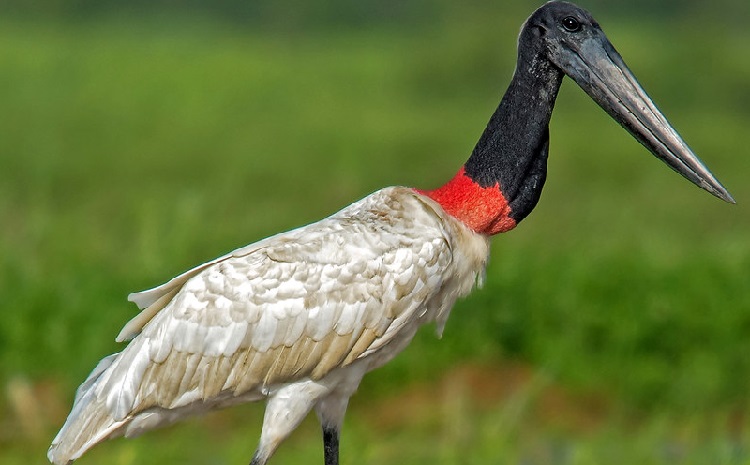
Like a dinosaur wrapped in cotton wool, the Jabiru bird is a tall scale-legged bird that feasts in the wetlands on crustaceans, amphibians, and fish. This bird has tall legs and a black neck with a bright red throat patch.
With their long legs, Jabiru reaches a height of 1.4 meters, while their wings span 2.8 meters.
Kakapo
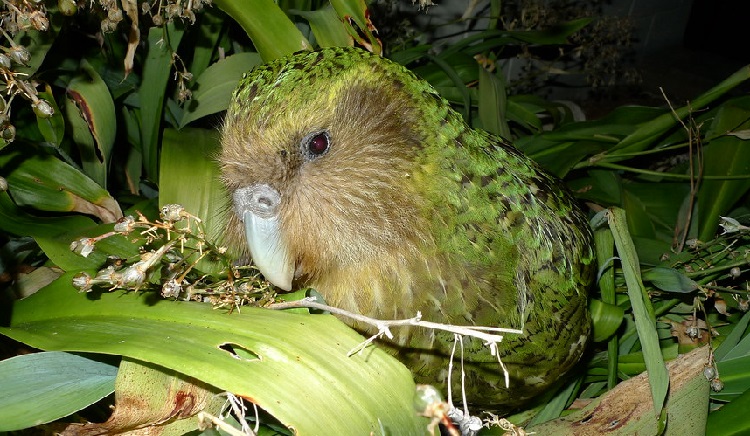
New Zealand has some amazing animals, including a flightless and nocturnal bird known as the kakapo. The kakapo is a type of parrot, and it grazes beneath the trees at night, looking for plants and fruits.
The kakapo is highly endangered, with fewer than 300 individual birds tracked in the wild.
Marabou Storks
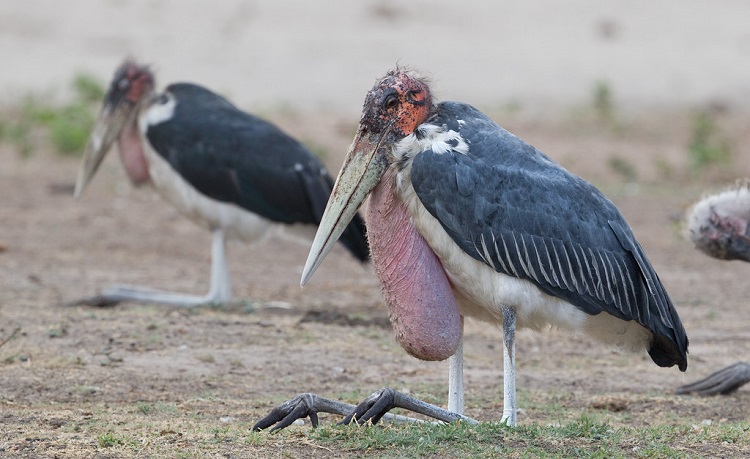
This next animal is quite bizarre as the marabou stork looks rather somber, like an undertaker, which is also its nickname. Marabou storks also love to kill flamingos, and they are true omnivores and carrion eaters.
Even their heads shed all feathers so they can stay cleaner when sticking their heads inside carcasses.
Rosy Maple Moth

I love butterflies, but this bright and colorful moth is just stunning. The rosy maple moth is found on maple trees (hence the name) on the North American East Coast.
When the larva that forms the maple moth has transformed into a beautiful moth, it loses its mouth since its prime focus is on breeding, and the moth stage of the animal is fairly short.
Saiga Antelope
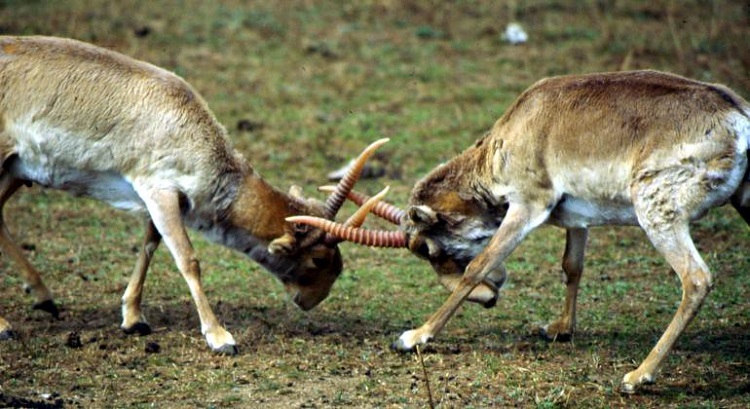
Imagine an antelope with a mouth like a hanging nose and a body the size of a small goat, and you’ve got the saiga antelope. The saiga can inflate its nose to cover its mouth and protect it from dust. Once the nose is inflated, the saiga resembles a camel.
Vinegaroon
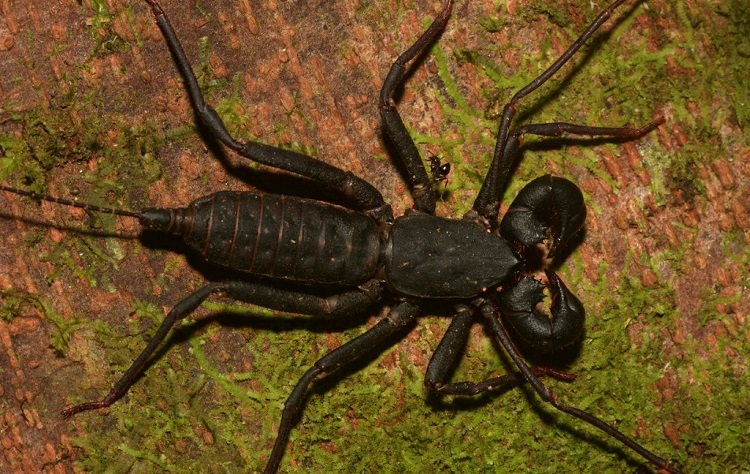
Part spider and part scorpion, the vinegaroon is a strange arachnid, and the whip-like tail isn’t nearly as bad as the acid that it sprays from its butt. Vinegaroons have many eyes, but they are nearly blind.
Yeti Crab
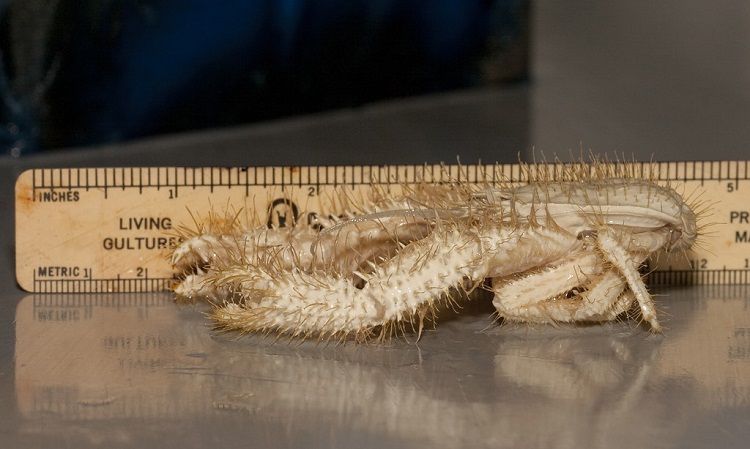
Like the fabled snow monster, the yeti crab has long pincers that are covered in fur, giving it an almost ape-like appearance. Despite this, the yeti crab lives in deep thermal vents in the ocean.
Freaky Animal: Craziest Animals
Mata Mata
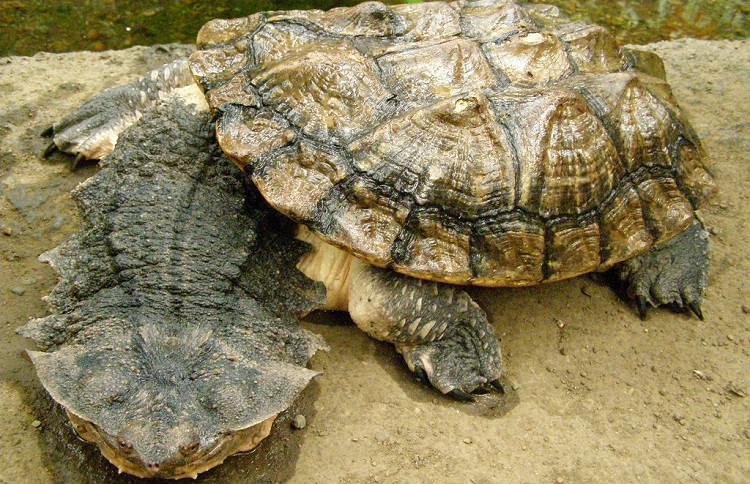
Freaky and cool, the mata mata is a type of turtle that lives in the Amazon River, where this driftwood-looking animal sucks fish in as part of its diet.
The turtle’s shell is hardened to form ridges that provide protection and camouflage to the mata mata. With a series of flaps, the mata mata can disguise itself and also sense other animals in the water, helping to hunt its prey.
Mexican Mole Lizard
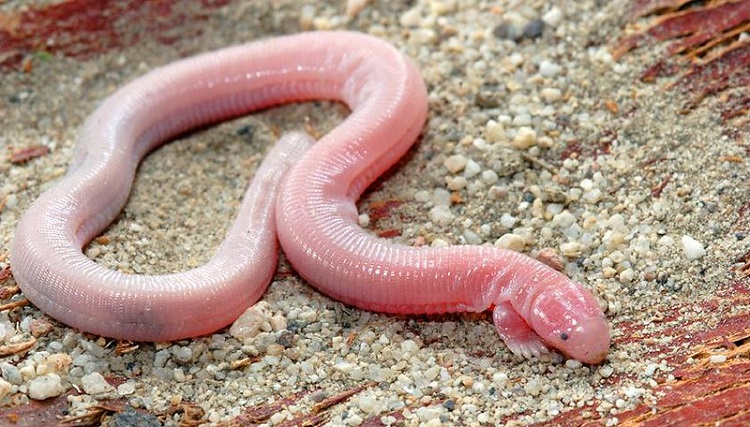
What happens when a lizard, a mole, and a snake end up together? You get a Mexican mole lizard. This unusual animal is a mole; though it has front legs, the animal doesn’t have back legs, and it moves by pulling itself forward while pushing forward with its elongated tail.
Because of its snake-like appearance, the Mexican mole lizards are often mistaken for snakes and killed.
Okapi
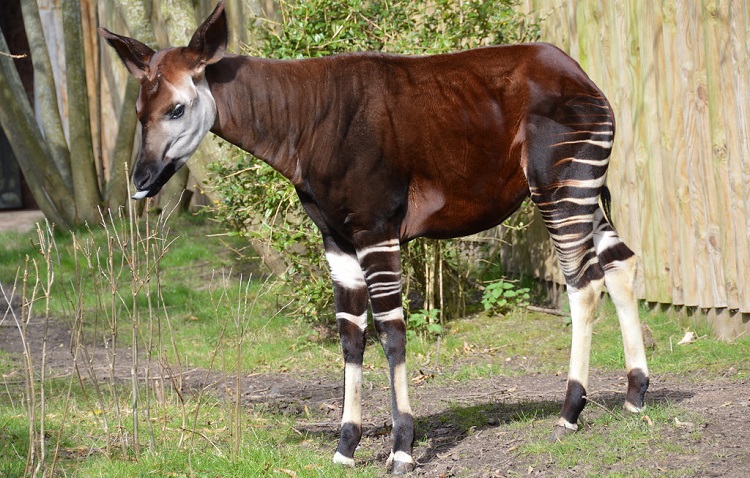
The okapi looks like something out of the movie Avatar, and if they were blue, you’d agree with me. But they are certainly magical, and the unusual markings make these animals both antelope, equid, and almost giraffe since it has a long, pointed snout like a giraffe. Okapi produces a chuff sound, which is used to attract mates.
Sawfish
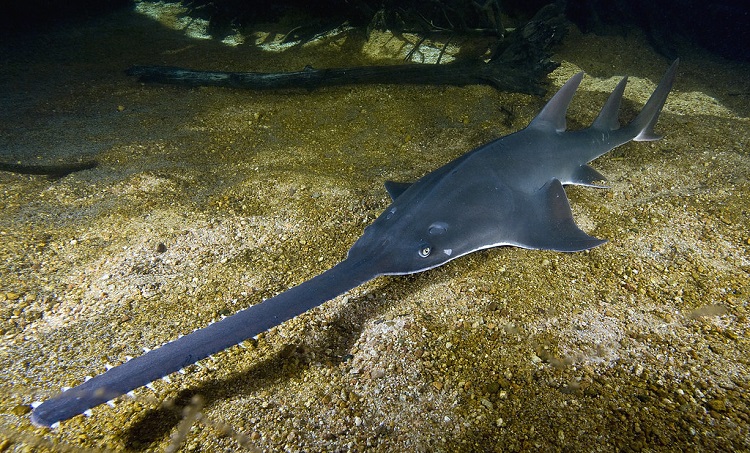
Imagine a saw swimming around the ocean currents, and you’d be spot on. The sawfish is a type of ray, and the elongated sword-like mouth has teeth on either side that the fish uses for preying on other animals.
The teeth are actually scales that can pin prey to the ocean floor or be used to sift through the bottom silt to reveal hidden fish and crustaceans.
Secretary Bird
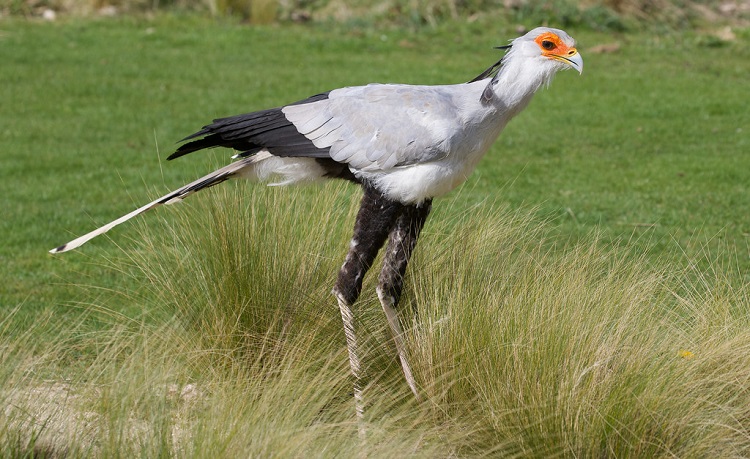
I love the secretary bird from my home country, South Africa. This magnificent bird has the body of an eagle, but it’s on long, stilt-like legs.
Secretary birds love to dance as part of their courtship rituals, and when they hunt their favorite prey—snakes—it kicks with tremendous force, easily disabling the snake and killing it.
Shoebill
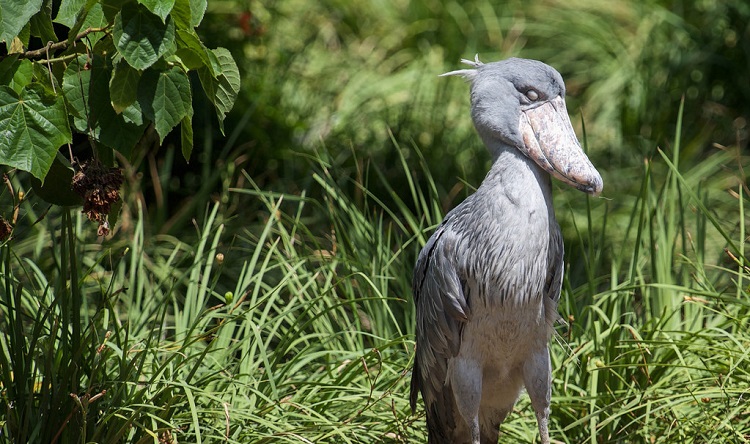
Staying with strange birds, the shoebill bird is a huge, almost prehistoric bird with a large shoe-shaped beak that it can clatter together to sound like a machine gun. In the wild, it stalks the papyrus reeds to find and feast on lungfish buried in the mud.
Thorny Devil
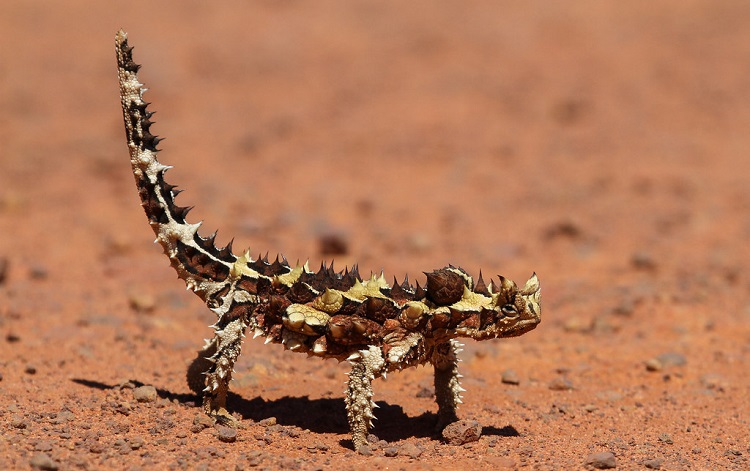
This lizard is tough as nails, with its outer covering of sharp spikes to protect it from predators in the Australian outback. The thorny devil can drink water through its skin when there is rainfall, allowing the lizard to hydrate in a desert country.
Vampire Ground Finch
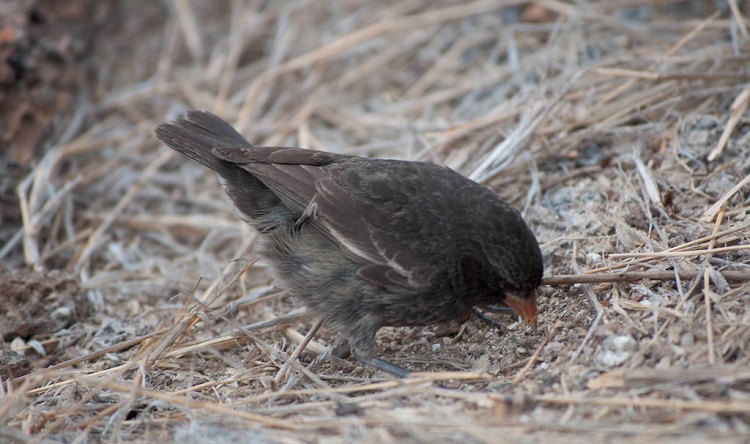
Time for Dracula to take wing, and the vampire ground finch is exactly this. While this small bird seems like any other finch, it has one peculiarity—it loves to drink the blood of other birds.
Vampire Squid
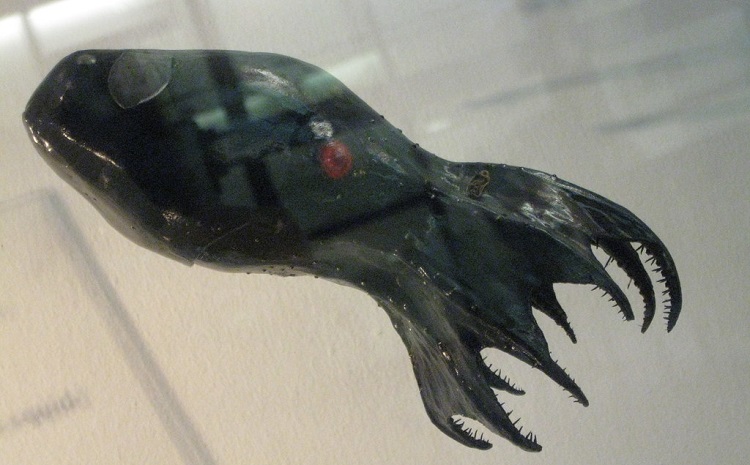
If Dracula would land in the sea, he would probably look like a vampire with the cloak of red that the vampire squid wears. The vampire squid has eight-foot-long tentacles to scavenge with.
Rare Weird Animals: Unknown Animals (The Lesser Known Ones)
Gerenuk
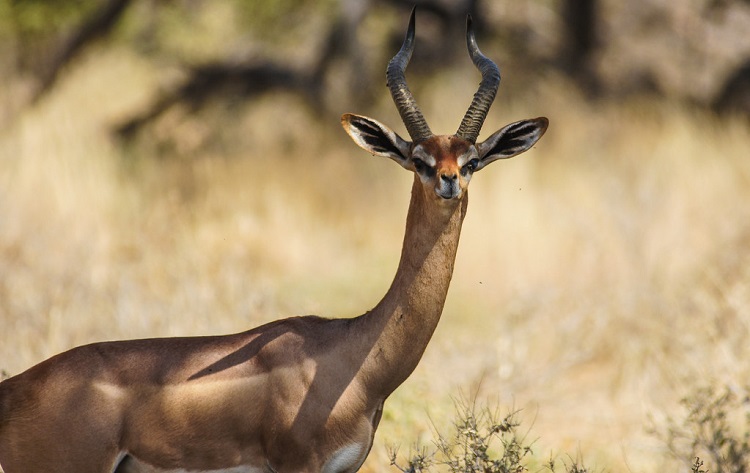
When I first saw the gerenuk, I couldn’t believe my eyes. Aptly named giraffe gazelle, these antelopes are gifted with extraordinarily long necks, making them resemble a giraffe. With their long necks, their heads seem out of place and way too small, despite supporting an impressive set of horns (for the males).
Gerenuks can stand completely upright due to their unique spine, which lets them graze trees as high as 6 feet into the air.
Venezuelan Poodle Moth
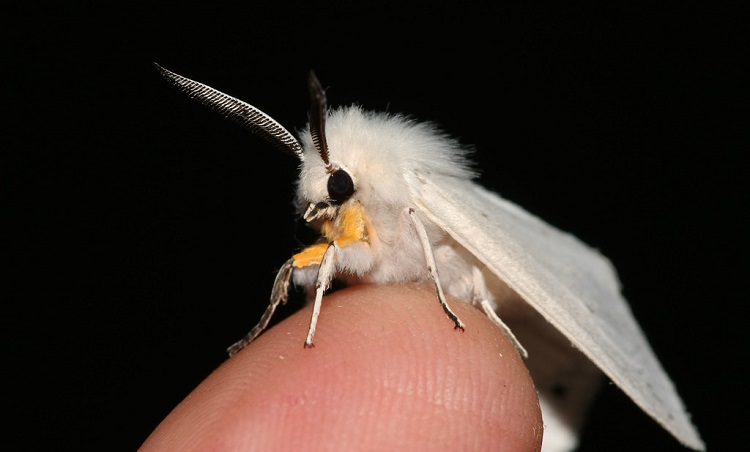
I am fast becoming a firm moth fanatic. I love the bright, fluffy appearance of the Venezuelan poodle moth. It looks like a French poodle that’s just come back from the doggy parlor.
Narwhal

Known as the unicorn of the sea, the narwhal is a type of whale that has a single tooth or tusk that forms on its head. Like the myths of old, the tusk is spiraled to create a truly fairytale appearance, and male narwhals show their power by engaging in a type of “sword fighting” with each other.
One tusk can weigh as much as 10 kg, which made the narwhal a prime catch for early whalers who harvested the tusk for ivory.
Proboscis Monkey
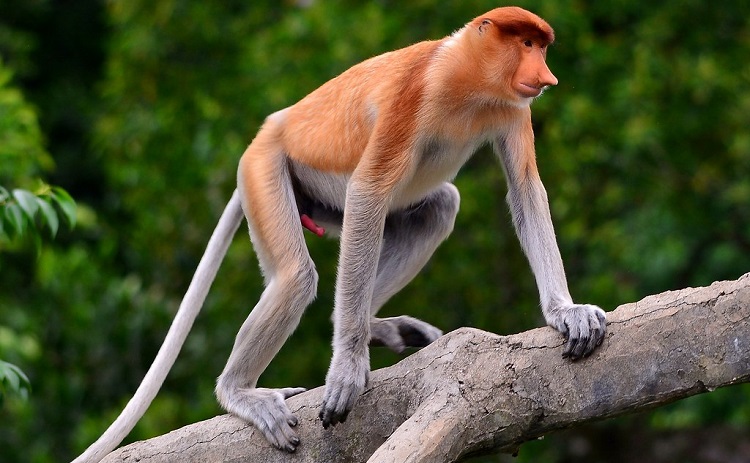
If I call them the orange-nosed monkey, you’ll instantly know what animal I am talking about. The proboscis monkey is a rather strange-looking primate with a large nose that hangs from their face.
These monkeys are only found on the island of Borneo, and they are endangered.
Satanic Leaf-Tailed Gecko
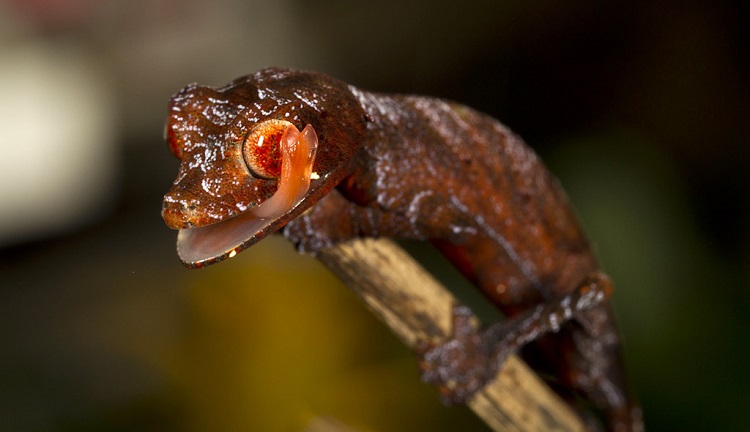
The satanic leaf-tailed gecko is a rather unique animal. The head accounts for the satanic part of its name, while its tail is shaped like a leaf. The gecko has a wicked appearance due to two spiny horns above its eyes.
Like other geckos, the satanic leaf-tailed gecko lays eggs, which hatches fully independent offspring.
Sichuan Takin
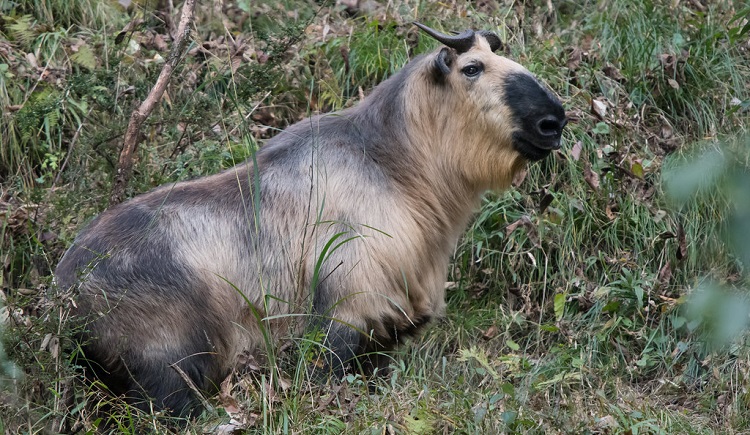
Both goat and antelope, the Sichuan takin is native to China and Tibet, where these antelopes live in both grasslands, forests, and mountains. Their cloven hooves allow them to grip rugged mountainous terrain, and they often live at heights over 14,000 feet.
Spanish Dancer
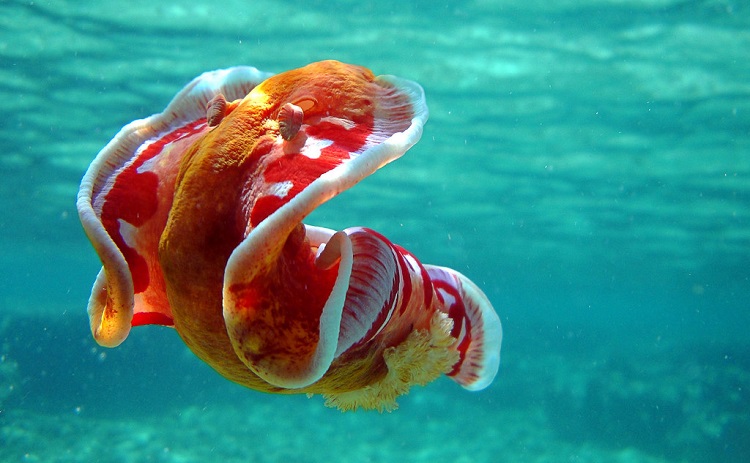
The Spanish dancer is a type of sea slug that has a large frilly red mantle that curves upward when it swims, creating what looks like a Spanish lady busy dancing.
The slug enjoys feasting on sea sponges, and this animal is hermaphroditic, meaning it’s got both male and female reproductive organs.
Giant Isopod

A giant isopod is a species of crustacean, but it is bug-like in appearance. These creatures live burrowed into the ocean floor for protection, where they sift nutrients from the bottom silt.
Philippine Eagle
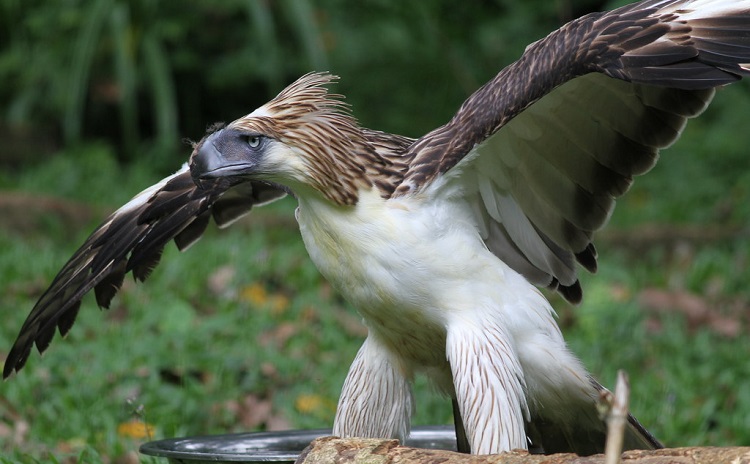
The large Philippine eagle is one of the largest eagles in the world, and it’s rather unique in that it specifically predates on monkeys. These eagles also mate for life, though they may not always remain together when it’s not mating season, as they are solitary birds.
They are also the only predatory bird with blue eyes in the world.
FAQ’s
What Is the Most Unusual Animal in the World?
The Axolotl is the most unusual animal in the world because they look like alien fish with aquatic plant-like growths and four legs. But these little creatures are related to the tiger salamander and are found in freshwater bodies in Mexico.
What Is the Craziest Animal in the World?
The craziest animal on our globe is the sparklemuffin which looks like a spider that visited Charlie’s Chocolate Factory. A sparklemuffin is a colorful peacock spider native to Australia.
What Is the Most Uncommonly Known Animal?
One animal that is commonly unknown is the flying fish. This fish looks like a cross between a fish and a bird because they have longer pectoral fins that help them glide above the water for up to 45 seconds.
Conclusion
The animal kingdom has weird and amazing animals that are a blessing to those who have a curious mind and an interest in the world’s animals. Only by learning about the biodiversity of the animal world can we learn to manage the gift of our animal heritage.


